By Andrew Humphries
From July 11-17, Uniting Church members from around Australia will gather at the 17th Assembly with one hugely important item on the agenda.
In fact, in terms of the Church’s sustainability, the item up for discussion couldn’t be more important, with the decisions that arise from it set to chart our future course for many years to come.
This groundbreaking discussion, and the decisions that follow, will bring to a close the process known as the Act2 Project, an exhaustive period of engagement, consultation, discernment and decisions intended to map the future direction of the Church and its members.
It’s quite likely that Uniting Church members will never again be asked to consider such an important document than the one which will emerge from the Act2 Project.
Former Assembly Standing Committee member and current Act2 Project communications officer Bethany Broadstock says the platform for a deep conversation around the Church’s future was laid three years ago at a national level.
“It began in March 2020 at the prompting of Assembly Standing Committee members, who recognised the numerous and sometimes overlapping challenges we are facing as a Church, and that some kind of intentional conversation about this needed to start from somewhere,” she says.
“They recognised this was faithful to the Basis of Union vision that we will keep our life ‘under constant review’.
“Our current governance structures were made for the church we were four decades ago and no longer make sense, and they are too unwieldy, too inflexible, have too much overlap and are simply too big.
“We are now a much smaller and older church with less people and less capacity than we have had in the past. This is not a judgement or criticism, just an observation.
“Whether we are ready to accept it or not, the Uniting Church is in a season of change and renewal.
“Addressing our challenges will take courage and honesty about the past, present and future, and Act2 is an opportunity to face our challenges head on as a whole Church and discern together a system of life and governance that will be life giving, instead of just patching holes in our context or simply dying apart in the next 10 years.”
The work of members of the Act2 Project Unit and Act2 Steering Committee, which was established last year and includes Melbourne’s Jessica Hateley-Browne, will culminate in a series of recommendations to be put before next year’s 17th Assembly.
On May 10, the final Act2 Project report was released to 17th Assembly members and the wider Uniting Church.
‘Act2: The Gift of the Spirit’ is a major piece of work on the life and future of the Uniting Church in Australia. Based on intensive consultation and extended reflection, it puts forward a vision in three different areas and includes an integrated set of proposals to go before the Assembly in July.
The report has also been translated into 16 languages, other than English
It’s been an exhaustive process to date involving intense and important work, a fact not lost on Jessica, but one she has approached with great excitement, rather than any sense of trepidation.
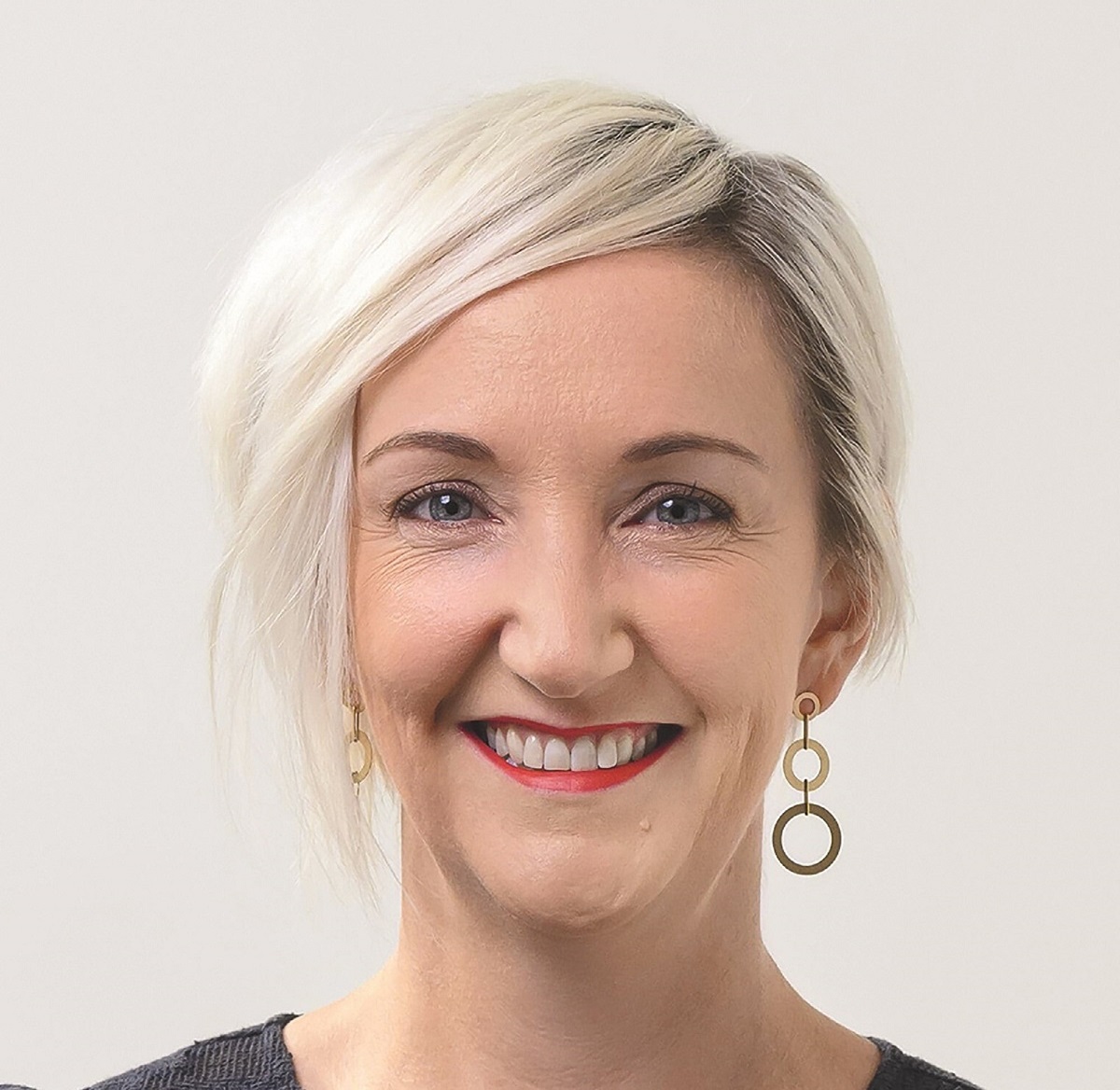
Jessica Hateley-Browne is energised by what the Act2 Project means for the Uniting Church.
“I have been describing it to people as the possible precipitator of the greatest period of change for us since union in 1977,” she says.
“More than anything, though, it excites me, as there is a responsibility collectively on all of us to discern what’s right for the Uniting Church and to discern what God is calling us into.
“The possibility of what all of this could bring, though, is really energising.”
Overseeing the Act2 Project is Canberra-based Uniting Church member Andrew Johnson, who brings a wealth of experience to the role, including positions with Uniting Care, Uniting World, and World Vision Australia, as well as 12 years as part of the Assembly Standing Committee.
As conversations within the Church go, they don’t come bigger than this one, he says.
“We certainly see it as the biggest conversation we’ve had in the Church in its 46-year history,” Andrew says.
“We’ve had big conversations down through our history around baptism, and ministry, and the long shadow of the debate on human sexuality, but this is a really significant conversation collectively we’re trying to have about the shape and the order of our Church, given the very, very different Church we have become since 1977.
“It’s only a couple of years ago that we celebrated the 50th anniversary of the Basis of Union, and what we are asking now is how do we keep reimagining how we can live out the vision contained in that?
“So for me, the most important thing is us doing our best work in this Act2 Project to help the Church have the conversation needed about its life and its future.
“I have a great passion for the church and I have a lot of ideas, but I also know that the church isn’t going to change just because I write a report or bring a proposal forward, it will only change to reshape its life to be healthier and more life-giving if it chooses to.
“The weight of responsibility I feel is around how we do our best work to enable the Church to have that conversation and to then take action on what emerges from it.”
As a member of the Northcote Uniting Church, Chair of its Church Council, and a Synod Standing Committee member from 2017-22, Jessica is also perfectly placed to bring her skills and experience to the table for a deep dive into the Church’s future direction.
“I bring a sense of enthusiasm for the Church, and a commitment to its future, to my role on the steering committee,” she says.
“I want the Church to continue to exist, and I would love to have another 40 years of worshipping as part of it.
“I bring to my role a real hope for the Church’s future, and I wanted to be able to be a part of helping to ensure that that future exists.
“I have been involved in other councils and communities of the Church, a former member of the Synod Standing Committee and have led a number of projects as part of that, so I think I have a bit of a sense of the strategic challenges that the Church is facing.
“There’s also a set of professional skills that I can bring to the process in terms of strategic thinking and project planning, and also around stakeholder consultation.”
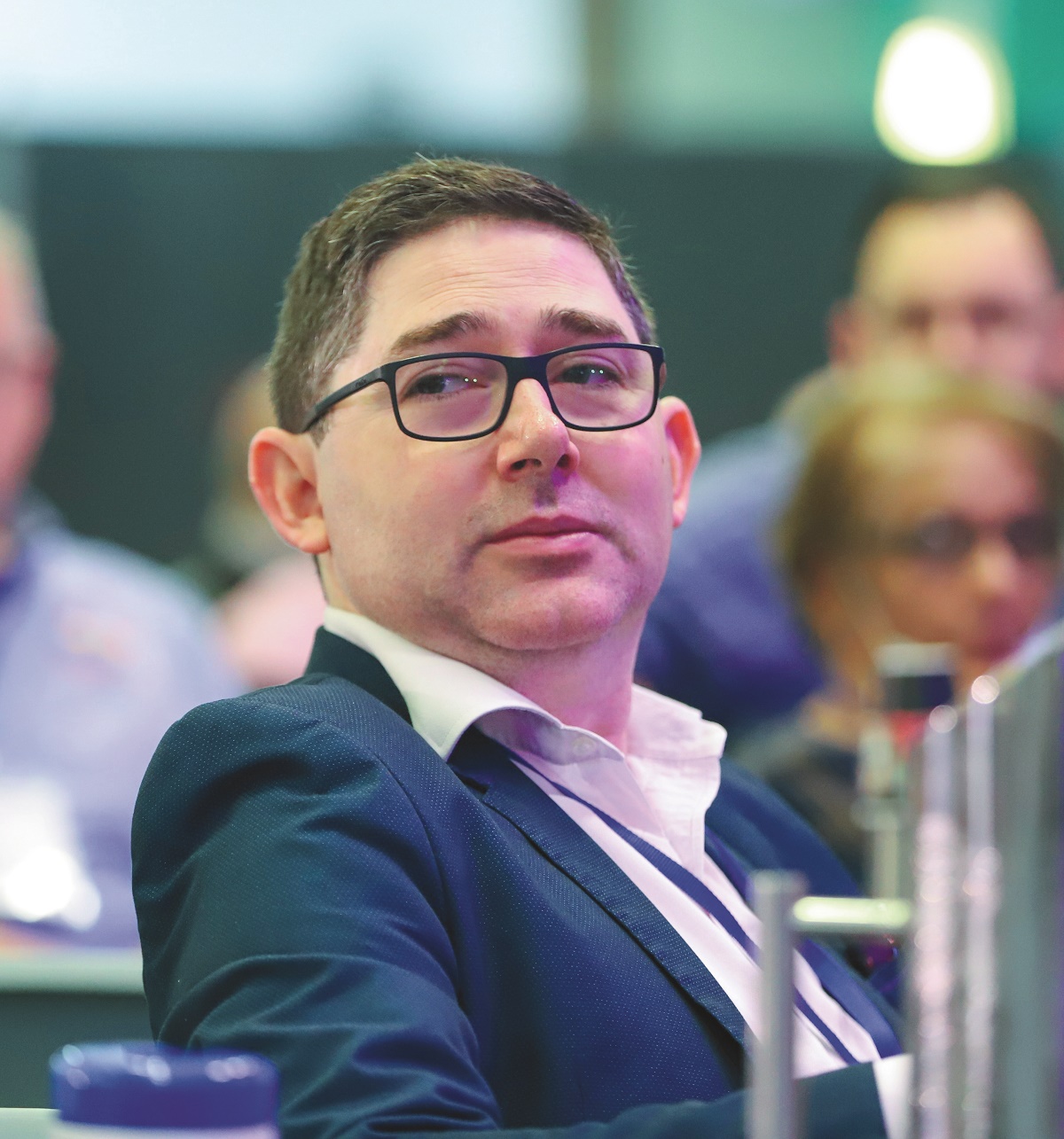
Andrew Johnson says phase one of the Act2 Project has given the steering committee a wealth of material to consider.
At the heart of any discussion around the Church’s future, says Jessica, must come honesty.
It’s possible to love so much of what the Uniting Church represents, and does, while still asking some tough questions around what it and its members could do better, she says.
“I love the Uniting Church dearly, but I think if we look around and we are honest with ourselves we all notice and have experienced that our life together hasn’t always been optimal,” Jessica says.
“Perhaps the way that we are structured, the way that we organise ourselves, and the way that we are governed, isn’t always as life-giving as it could be.
“But I think there is still something inherently beautiful about the fact that the Basis of Union which articulates the platform that the Uniting Church was formed around, continues to be inspiring to people throughout the country.
“We want to be able to keep the essence of what enables the Uniting Church to make such a positive contribution to the religious institutional landscape in Australia.
“We have to be able to reinvigorate our local communities of faith, and we need to be able to organise and govern ourselves in a way that is life-giving across the different councils of the church while retaining our interconciliar nature.”
As phase one, or Exploration, of the project has come to a close, Jessica is excited about the insights members have contributed to what has become the ‘Act2: In response to God’s call’ report.
“Phase one was a time to explore possibilities and ideas, and reach out to every congregation and faith community, every Presbytery, every Synod, and all of our agencies to generate and explore ideas,” Jessica says.
“It was an opportunity to think about how life could be shaped differently, focused on what is currently working well and is life-giving, and what people love and appreciate about their worship and life together in the Uniting Church, but also about what isn’t working, what is holding us back, and what are some of the challenges and barriers we’re experiencing in this context.”
Andrew says phase one of the project provided a wealth of material and insights for the steering committee to consider in preparing the ‘Act2: In response to God’s call’ report.
“I think that it has provided us with a thorough look at the reality of the state of our Church,” he says.
“Someone gave me the quote recently that ‘contemplation is a long, loving look at the real’, which comes from a Jesuit priest, and what I found is that I feel like we encountered the reality of the Church during this first phase.
“So we didn’t get everything we might possibly have wanted through the process but we did get a pretty strong sense, feel and understanding of the shape of our Church and where it’s at and how it’s feeling about that?
“I think we’ve got enough to help shape and inform what we’re doing now.”
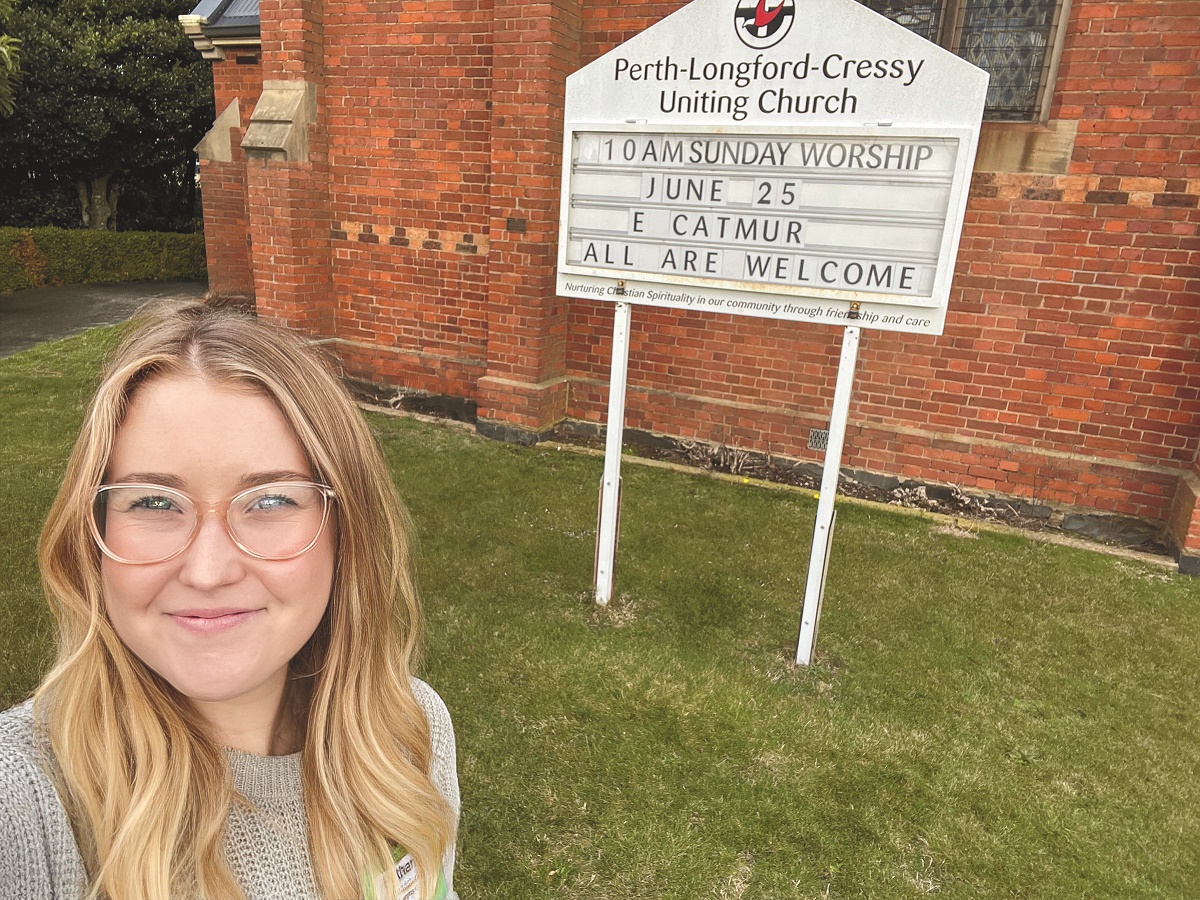
Bethany Broadstock says there are a number of directions and options to be considered during the discernment phase of the project.
What emerged strongly from extensive consultation, Jessica says, was concern around the many governance and compliance tasks that members felt were impacting negatively on their discipleship.
“What really stood out to me and resonated with me from the report, and was listed as a key challenge, was the fact that we have what are described as weary local communities of faith that are often overburdened by complicated tasks,” she says.
“They face so many issues around governance and compliance that they’re no longer able to put their best energy into discipleship because so many other things are taking up that energy.
“Something else that resonated with me in the report was that our greatest asset is also at times our greatest crisis, and that is our people.
“This includes an ageing population in local churches, leadership succession pathways that are not always obvious, and many Presbyteries and Synods finding it increasingly challenging to fill chair of committee roles and so on.”
Like Jessica, Bethany says feedback from phase one of Act2 clearly indicates that too much energy is being spent on administration and compliance, rather than the more important mission and ministry work.
“Local people especially are telling us that they do not have the energy for what the wider Church is asking of them anymore and what little energy they do have is getting sapped by things like building maintenance, administration and compliance,” she says.
“This leaves little time for their core mission and ministry. So we need a governance system that both helps us meet our legal and ethical obligations while also letting people get on with the business of being Church.
“There are also big inequalities in resourcing in different parts of our Church.
“For example, some Synods are relatively well resourced and functioning well, while others are in a more precarious situation.
“This is also true of presbyteries, with some having large leadership teams of ministers and some having no paid resourcing at all.
“It is also true of congregations, where people’s ability to fund mission and ministry depends completely on what money they can raise out of the giving of members or the income off property. This may be unjust, for example, in rural areas.
“So we need to explore if there are better, more equitable ways of resourcing the mission and ministry we want to do.”
Andrew says that feedback during the first phase of the process clearly showed that members were grappling with where their Church was placed at this moment in time.
“I think that we have a Church that is facing some really significant challenges, especially in our congregational life,” he says.
“So that sense of the size, the age, and the energy of our local communities not being where they would hope it would be is real.
“There is some grief and disappointment that we’re not the Church that we hoped we might be when we turned 46, but there’s also still an openness to change, to renewal, and to doing things differently.”
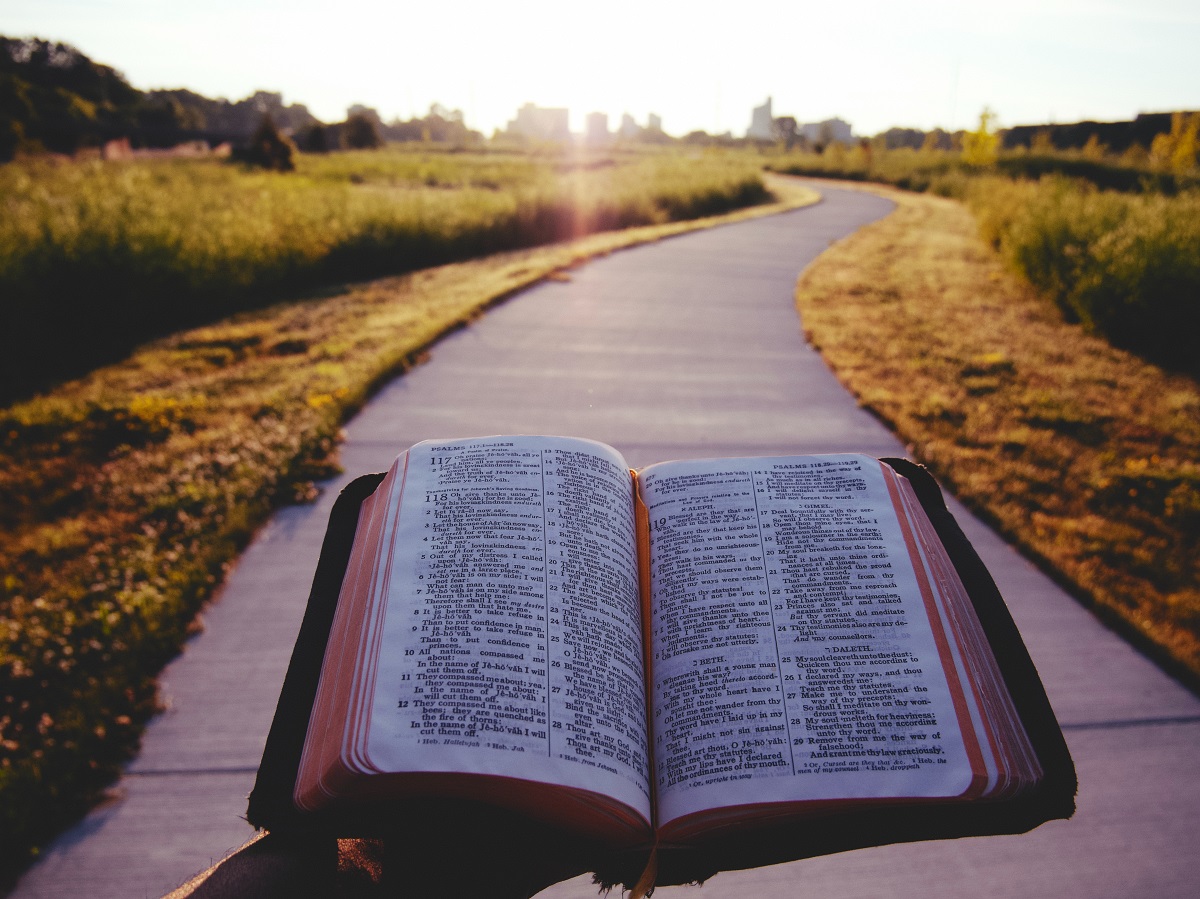
“The key thing that we are asking people to do now is to answer the question of where do you believe God is calling us to go in the shape and ordering of our life,” says Andrew Johnson.
Bethany says Uniting Church members now have the opportunity to consider from the report four directions relating to the future of local communities, and four options relating to future governance.
“These options range from major strategic change, like going from four councils to three, to something resembling our current structure with some added mechanisms,” she says.
“What we end up proposing to the Assembly next year completely depends on the discernment of the Church.
“A preferred option out of the four may emerge, or out of our engagement we may feel there is a fifth option emerging.”
With the Act2 Project now in phase two, or Collective Discernment, Andrew says members can continue to provide vital input into what will go before the 17th Assembly next year.
“The key thing that we are asking people to do now is to answer the question of where do you believe God is calling us to go in the shape and ordering of our life,” he says.
“We’re asking, ‘where is God calling us’, and we’re inviting people to engage with what we’re proposing, to participate in conversations about it, to offer to us where they see opportunities and where they see risks, and whether they’ve got questions or concerns.
“So it’s not a case of ‘well, here are our proposals and what do you think’, it’s ‘where do you think that God’s calling us?’
“It’s about asking ‘what do you think the opportunity for us is, what would this mean for you, for your context and for our life, and what do we do about it?’
“So people need to participate, engage, contribute, and provide their insight, not just wait and see what eventuates.”
Ongoing participation continues to be the key to the whole process, says Jessica.
“Participate, participate, participate is my advice to Uniting Church members,” she says.
“Please take part by getting involved in the process, reading the material in the ‘Act2: In response to God’s call’ report, and making submissions around that.
“I really do think that through participating in a collective discernment phase, we can discern what God is calling us to.
“Sometimes change is hard, but I think we are really well resourced to be thinking about how we can move forward and step into something really good.
“We have a range of choices in front of us and some of the options are more radical than others, in terms of how we might adapt our structure and governance models, but my hope is that we are able to be really creative, really courageous, and really committed to implementing whatever decisions we make.”
Those decisions and their impact need to be at the forefront of our thinking if the Church is going to thrive well into the future, says Jessica.
“What we’ve heard consistently in the exploration phase of the Act2 Project is that people are calling for change and they recognise how important and how urgent reimagining what we could look like is,” she says.
“So there is an urgent need for us to reimagine what the future of our Church should look like, and creating a better and more beautiful Uniting Church has absolutely been at the front of my mind as a steering committee member.
“It’s not about change for change’s sake, or for financial reasons, although, of course, financial aspects do come into it.
“This is about change because we want to be a better and more beautiful Uniting Church when we are participating in God’s kingdom, responding to God’s love, and unless we are doing that, and unless that is the ultimate outcome, the project won’t have achieved what we hoped for.”
While honesty has been at the centre of the consultation process, Andrew says that with that level of openness comes an opportunity to reimagine a better Uniting Church.
“One of the hopeful things I would say is that everywhere you go, someone’s trying to do something new and someone’s trying to do something differently,” he says.
“It’s very under the radar and very small in most cases, so part of this is about asking, ‘well, how do we encourage and foster and recognise all that’ while also saying, ‘oh, there are some great things going on’, so the institutional life of our Church isn’t simply monopolised by the challenges that we are facing.”
As the 17th Assembly gathering looms large on the horizon, Jessica can see a process unfolding which sets up a future Uniting Church which benefits from, and has been blessed by, the wisdom and insight of its many and diverse members.
That’s why, she says, it has been an honour to be part of the Act2 Project’s Steering Committee.
“I would hope that the outcome from the creativity, courage and commitment that have all gone into this process is a more vibrant Uniting Church that is growing, is life-giving for those involved in it, and brings restoration and reconciliation to the world,” she says.
“What I hope for is a healthy and sustainable Church.”
Read the ‘Act2: In response to God’s call’ report in full here
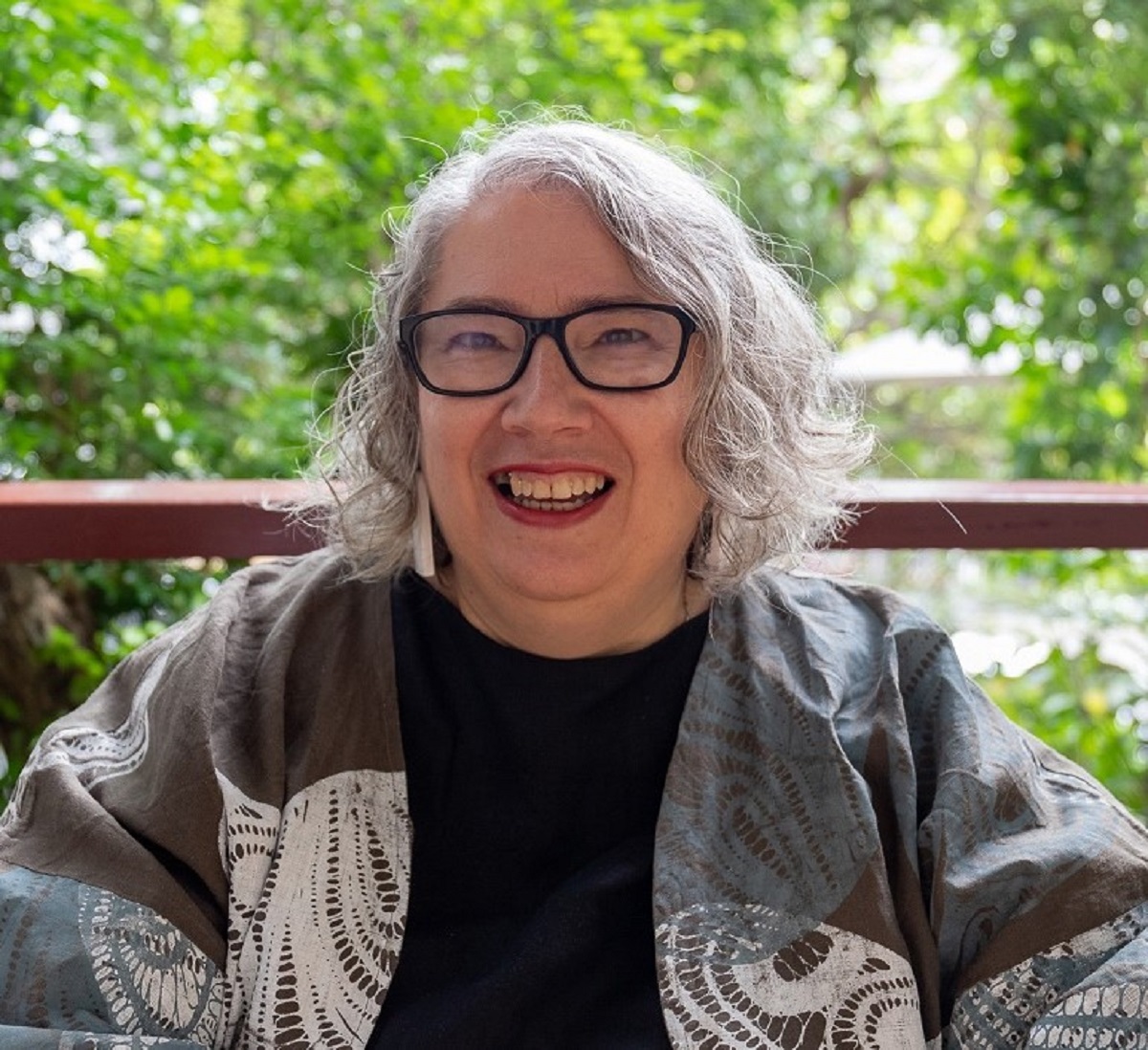
“We hear the invitation to forge a new future together in hope, a future of faithful innovation, discipleship and community,” says Sharon Hollis.
We can forge a new future
By Rev Sharon Hollis, Uniting Church in Australia Assembly President
In my message this year for the 46th anniversary of the Uniting Church, I posted this central question: “Are you and I prepared to answer courageously Christ’s call for our time and place?”
It was an echo of the question posed by our inaugural President Rev Dr Davis McCaughey in 1977, and resonates with the vision of Act2.
Giving thanks for our past, we ask: where is God now leading us, and how might we rise to the challenge of the Basis of Union to order our life “in response to God’s call to enter more fully into mission?”
Act2 is an historic project, both in breadth and depth. It is the most holistic exploration of the life of the Uniting Church we have ever undertaken, and is committed to engaging personally with people in every part of the Uniting Church.
As a Church, we are in a new context. Much has changed since the time of our formation, both in our Church and in the world we inhabit. Act2 is engaging the whole Church in discerning what might be the most appropriate and life-giving form of governance for the Uniting Church of 2023 and the decades to come. At the heart of this work is local Uniting Church communities, whose worship, witness, service and discipleship we seek to better enable and to see flourish.
For some it may seem that the governance of the Church is far removed from the realities of life in local communities. However, we have heard clearly through our engagement that the way the wider Church orders and runs itself does have a significant impact on the ability and freedom of our communities to live out their mission and ministry.
By ensuring our governance is as effective and flexible as possible, we pray that members of the Uniting Church will be freer to engage in ministry and mission, witness to the good news of Jesus Christ, invite people to faith, engage in faith formation and work to build communities of justice and inclusion.
We continue to affirm the importance of the legal, ethical and social obligations we have as a Church, reflecting our desire to be safe and supportive communities, particularly for those who are vulnerable, but we must explore how to best fulfil these so that they don’t become overwhelming for local communities, stifling ministry.
Act2 is a pause at this moment of our life, allowing us a chance to think afresh about how we go about the important work of governing the Uniting Church in ways that support and sustain people in their discipleship, and in ways that honour the vision of the Basis of Union, the Covenant and our desire to be a multicultural Church.
By hearing from every part of the Uniting Church in this work, we hope it will ensure all Councils of our Church are focused on the core work of being the body of Christ.
In my anniversary message I asked: “Will we faithfully grapple with the changes in our life over the last four decades, trusting that even smaller and more marginal, we can be a faithful witness in this land? Can we be courageous in the face of our challenges? Might we make peace with the possibility that some things in our life may need to die so that new life can emerge?”
Act2 is one way we are grappling with these questions. Now is the time to pray and participate. As we give thanks for the witness of those before us, we hear the invitation to forge a new future together in hope, a future of faithful innovation, discipleship and community.
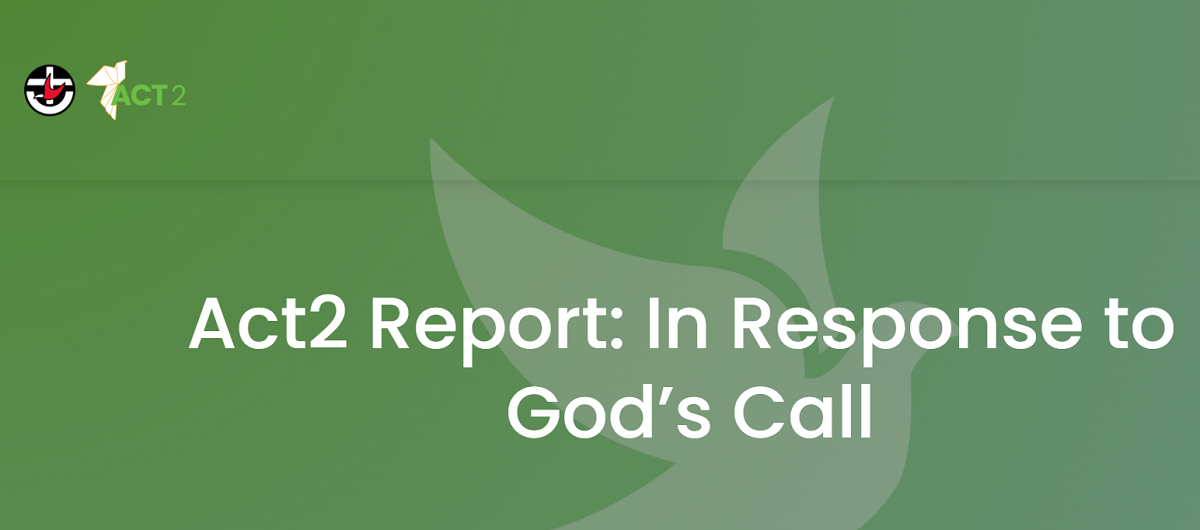
The report is the result of an intensive period of engagement with Uniting Church members right around the country.
Members heed the call
The first phase of the Act2 Project, known as Exploration, took place between November 2022 and May this year, culminating in the third Act2 report since the decision of the 16th Assembly last year to create the Act2 Project Unit and Steering Committee.
The report’s title of ‘Act2: In response to God’s call’, is drawn from the final sentence of paragraph 13 of 1977’s Basis of Union.
“The Uniting Church will thereafter provide for the exercise by men and women of the gifts God bestows upon them, and will order its life in response to God’s call to enter more fully into mission,” the report’s opening page says.
“It is a reminder that the ordering of our life is in response to God’s call.
“This report seeks to both reflect and respond to what we have heard as God’s call on our life through our engagement with the Church, our history, our context and the experiences of so many people shared with us across the length and breadth of the country.”
The 58-page report follows an intensive period of engagement with Uniting Church members right around the country.
The exhaustive consultation period involved direct communication with 2113 local contacts across 1672 local communities of faith and involved all 33 Presbyteries.
Every Synod in Australia was visited, as well as Uniting Church agencies and theological leaders, with 45 meetings allowing for a full process of engagement throughout the country.
Following this lengthy period of consultation, written contributions were received from 187 Church Council’s representing over 254 communities of faith, as well as 46 written submissions from individuals, councils and agencies.
“Consistent with the findings prior to the 16th Assembly, this exploration phase has deepened our understanding of the shape of our Church, the challenges we are facing, the things that matter to people across the Church and the imperative for change,” the report says.

The Act2 Project is now in its second phase, known as collective discernment.
The journey begins
The Act2 Project involves three separate phases, culminating in a series of recommendations to be put before the 17th Assembly in July next year.
The Act2 Project is led by the national Act2 Steering Committee and a staffed Project Unit, established following the decision of the 16th Assembly.
The Steering Committee is made up of people from across the Uniting Church.
Act2 has the potential to be the most transformative change project the Uniting Church in Australia has been involved in since the Basis of Union.
It focuses on discerning and deciding on our future together centred around four workstreams across the three phases.
Workstreams
1. Structures and practices within the Church that enable life-giving communities of faith and discipleship
2. Clarity on role, value and resourcing of national identity and national work
3. Governance structures which enable ministry and mission, increase capability, unlock resources and meet our obligations
4. Sustainable set of institutions and practices to support our theological culture, diverse ministries and enable discipleship
Phase one (Exploration)
This took place between November 2022 and May this year, and culminated in the third Act2 report, ‘Act2: In response to God’s call’.
Every congregation and faith community across the country had an opportunity to engage with the process and help to shape the key insights, issues and contexts around the options to be offered to the Church.
The first phase ended with Uniting in Prayer, an intensive period of shared discernment across the Uniting Church, which began with Pentecost on May 28 this year and continued until the 46th anniversary of the Uniting Church on June 22.
Phase two (Collective Discernment)
This began in June and will continue until November this year, with Uniting Church members asked to engage in an intensive period of shared discernment.
Presbyteries and Synods, along with other key governing bodies, will take part in meetings, with possible options and directions explored to assist this process.
All parts of the Church, involving congregations, church councils, agencies, schools, presbyteries, Synods, colleges, conferences, and networks, will be invited to consider specific ideas.
This will be a period of intense prayer and deliberation essential to the success of the project.
Phase three (Recommendations for Action)
This involves making choices about the recommendations that will be put to the 17th Assembly next year.
This will involve consideration of the insight and wisdom drawn from collective discernment.
“It has always been the hope of this project that it would lead towards concrete action and change, inspired and informed by the reflection and discernment of the Church,” the Act2 Project plan states.
“We anticipate that the change arising from this process will begin to take place across the triennium of the 17th Assembly.”

Uniting Church members are asked to consider four directions and options following the release of the latest report.
Directions and options outlined
Following the first phase of the Act2 Project, four directions and four options have been put forward in the ‘Act2: In response to God’s call’ report for Uniting Church members to consider.
The four directions relate to workstream 1 on local communities of faith, and the four options relate to workstream 3 on governance and resourcing, and have been outlined below by the Act2 Project Steering Committee.
The idea of the directions is that they are a diverse ‘toolbox’ of things that could be drawn on, depending on local community needs, so not all of them may apply everywhere.
Direction 1
Encourage local communities of discipleship and mission
• Seeks to encourage a focus on discipleship across the Uniting Church
• We have heard that encouraging a focus discipleship needs to be a higher priority
• Where we’re seeing life and health in our church, we’re seeing a consistent and structured approach to discipleship
• Also encourages more shared mission – in some communities there are lots of different expressions in a shared space, for example congregations that are close together, schools, agencies, community partners – are there ways we can work together
Direction 2
Align with the vision of congregations in the Basis of Union
• In the Basis of Union there is a clear and compelling vision of the life of congregations, which names five core things – word, sacrament, service, building each other up in love, sharing in the work of the wider church
• In the regulations we have piled a whole lot of things on top of that vision, meaning that we have started recognising congregations according to their capacity to meet the regulations, not these five core things
• This direction just says let’s get back to the heart of the vision (which will definitely entail some regulation change)
Direction 3
Support fit for purpose governance arrangements
• Local congregations are telling us they need more flexibility in how they govern their own life
• The Regulations create the impression that the normative structure of a congregation is one Congregation with one Church Council, one minister, funded off the giving of members. Almost none of our congregations now fit that model
• The capacity of congregations can vary drastically, some have a lot of energy and some have none, we need more flexibility and what we ask these communities to do needs to fit the local context
• Presbyteries also need to be empowered and resourced to respond to the needs of local communities in a more flexible way
Direction 4
Recognise there is a time for everything
• this one is almost about the life cycle of our communities but particularly around endings and beginnings
• we need simpler pathways for new communities to be birthed in the UCA, and we need to be better at helping congregations explore their future, including when they might close
These four directions will not alone renew our Church, rather they offer some ways of addressing the structural and systemic issues we have heard to try and provide space for communities to recentre their life on discipleship and mission.
Options
These are four options for structural models we might adopt for the future
Option 1
Proposes a three council model – local, national, and a third hybrid council which integrates the councils we currently know as the Presbytery and Synod
Option 2
In this model the regional council (currently known as the Synod) is the strongest and takes on some of the other responsibilities that were performed by the Assembly. You have a very small national council, and area councils (currently known as Presbyteries) perform just two roles – oversight of people and communities
Option 3
In this model the area councils (currently known as Presbyteries) are the strongest, focusing on oversight of people, communities and the administration directly relating to local communities but not property. Property is managed by the regional council (Synod). In this model we imagine having only two very small regional councils, which have just one role, which is to manage property trusts
Option 4
Is the closest with the status quo but with the addition of a mechanism to intentionally distribute a joint pool of funds (administered by Synod and Assembly) to ensure equitable resourcing of ministry and mission across the UCA
You can find our summary of strengths and weaknesses in each of the four models in section 6 of the report here

